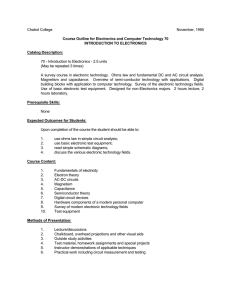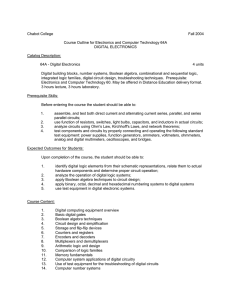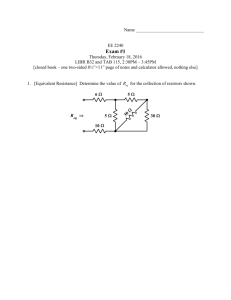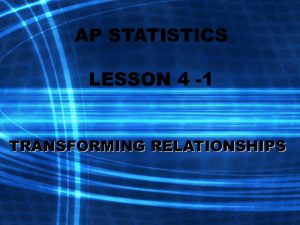Chabot College Fall 2003 65 - Circuit Analysis
advertisement
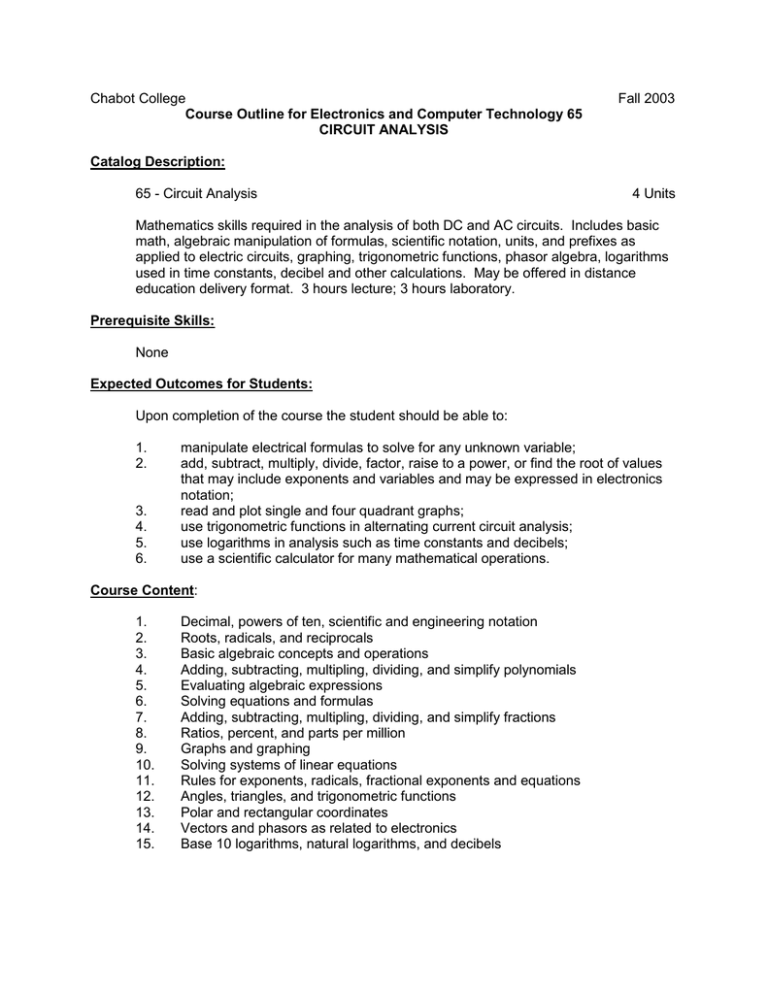
Chabot College Course Outline for Electronics and Computer Technology 65 CIRCUIT ANALYSIS Fall 2003 Catalog Description: 65 - Circuit Analysis 4 Units Mathematics skills required in the analysis of both DC and AC circuits. Includes basic math, algebraic manipulation of formulas, scientific notation, units, and prefixes as applied to electric circuits, graphing, trigonometric functions, phasor algebra, logarithms used in time constants, decibel and other calculations. May be offered in distance education delivery format. 3 hours lecture; 3 hours laboratory. Prerequisite Skills: None Expected Outcomes for Students: Upon completion of the course the student should be able to: 1. 2. 3. 4. 5. 6. manipulate electrical formulas to solve for any unknown variable; add, subtract, multiply, divide, factor, raise to a power, or find the root of values that may include exponents and variables and may be expressed in electronics notation; read and plot single and four quadrant graphs; use trigonometric functions in alternating current circuit analysis; use logarithms in analysis such as time constants and decibels; use a scientific calculator for many mathematical operations. Course Content: 1. 2. 3. 4. 5. 6. 7. 8. 9. 10. 11. 12. 13. 14. 15. Decimal, powers of ten, scientific and engineering notation Roots, radicals, and reciprocals Basic algebraic concepts and operations Adding, subtracting, multipling, dividing, and simplify polynomials Evaluating algebraic expressions Solving equations and formulas Adding, subtracting, multipling, dividing, and simplify fractions Ratios, percent, and parts per million Graphs and graphing Solving systems of linear equations Rules for exponents, radicals, fractional exponents and equations Angles, triangles, and trigonometric functions Polar and rectangular coordinates Vectors and phasors as related to electronics Base 10 logarithms, natural logarithms, and decibels Chabot College Course Outline for Electronics and Computer Technology 65 Fall 2003 Page 2 Methods of Presentation: 1. 2. 3. Lectures and demonstrations Chalkboard/visual presentations Electrical circuit problem solving Assignments and Methods of Evaluating Student Progress: 1. Typical Assignments a. Solve electrical circuit equations for an unknown b. Apply mathematical technique to prediction of circuit performance c. Measure electrical quantities with standard units 2. Methods of Evaluating Student Progress a. Scheduled quizzes b. Final examination c. Written homework Textbooks (Typical): Mathematics for Electricity & Electronics, Kramer; Delmar Publishing, 2002 Special Student Materials: Scientific calculator Nolly Ruiz Revised March 2003 U/hps/curriculum/Effec F2003/Electronics/65
